The 32 greatest movie monsters
They've got horns, scars, scary teeth, and sometimes, a sense of humor.
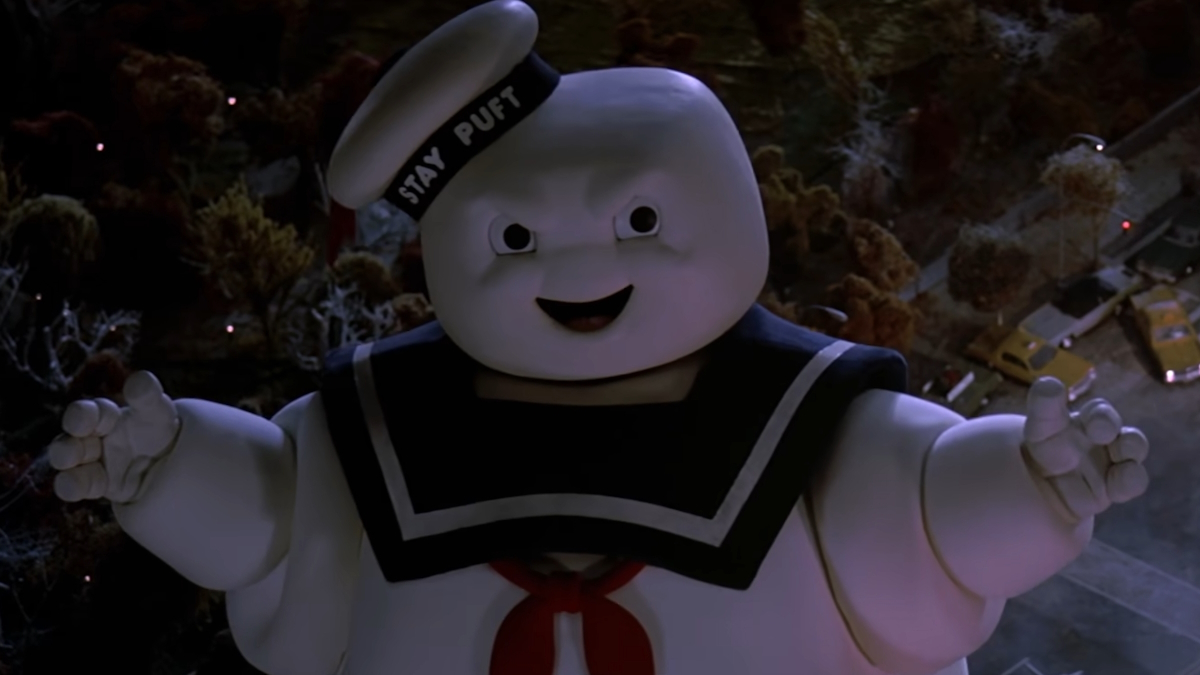
In a celebrated quote that is now hard to find its source, Godzilla creator Ishiro Honda once remarked: “Monsters are tragic beings; they are born too tall, too strong, too heavy, they are not evil by choice. That is their tragedy.” As soon as mankind could tell stories, there have always been monsters. But in the history of movies, which monsters are the ones who actually come out on top?
From Greek mythology to Abrahamic religions to comic books, monsters can represent anything a storyteller desires. They can be political or personal, scary or sweet. The only universal truth is that monsters represent something we refuse to acknowledge on the surface, their ugliness and violence exposing a hideousness that lives within us all.
In the long history of movies, filmmakers have been all-too-eager to include monsters in their stories, be it aliens from another world or just animals acting on pure instinct. In celebration of them, here are the 32 greatest movie monsters.
32. The Ram Man (Lamb, 2021)
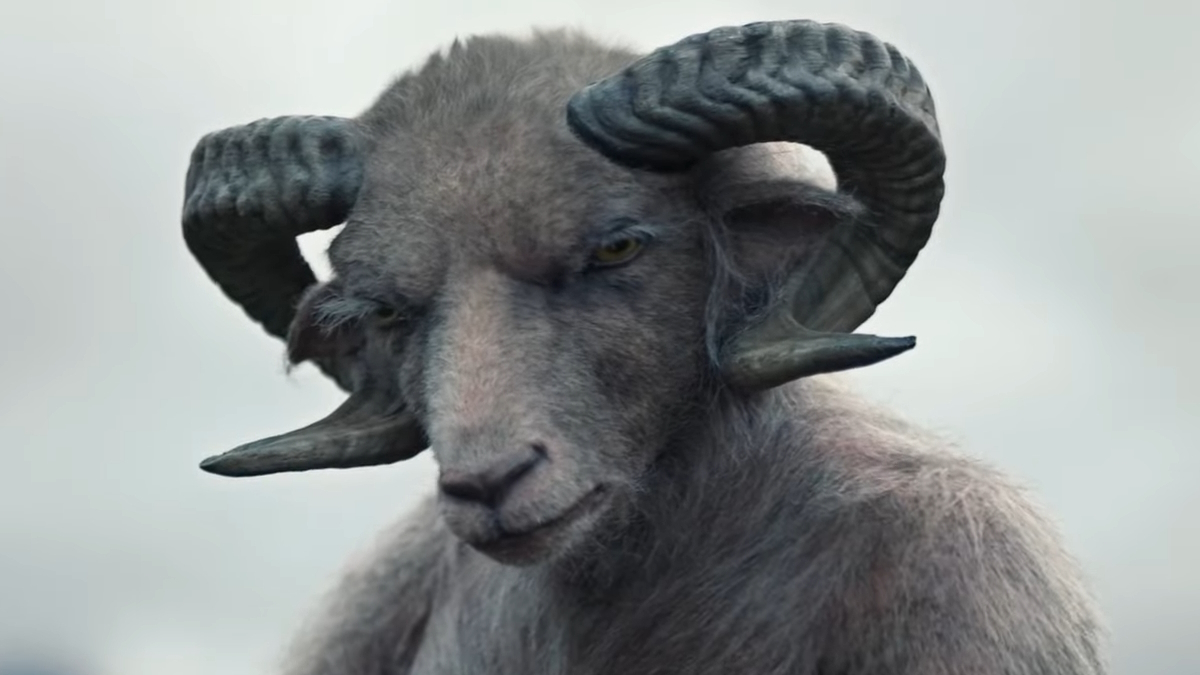
In one of the most startling last-minute reveals ever in a horror movie, writer/director Valdimar Jóhannsson unmasks the entity stalking his human characters in his 2021 folk horror Lamb. After rural farmers adopt a bizarre half-human, half-sheep baby, they incur the wrath of its biological father, simply known as the “Ram Man.” With the face of a ram but the body, intellect, and territorial possessiveness of a man – plus knowledge of handling firearms – the Ram Man has no explicable origin story. If there is, it’s not a story anyone would be welcome to hear. The Ram Man is a walking symbol for nature’s fury, as a sentient error in evolution’s grand design.
31. Gloria (Colossal, 2017)
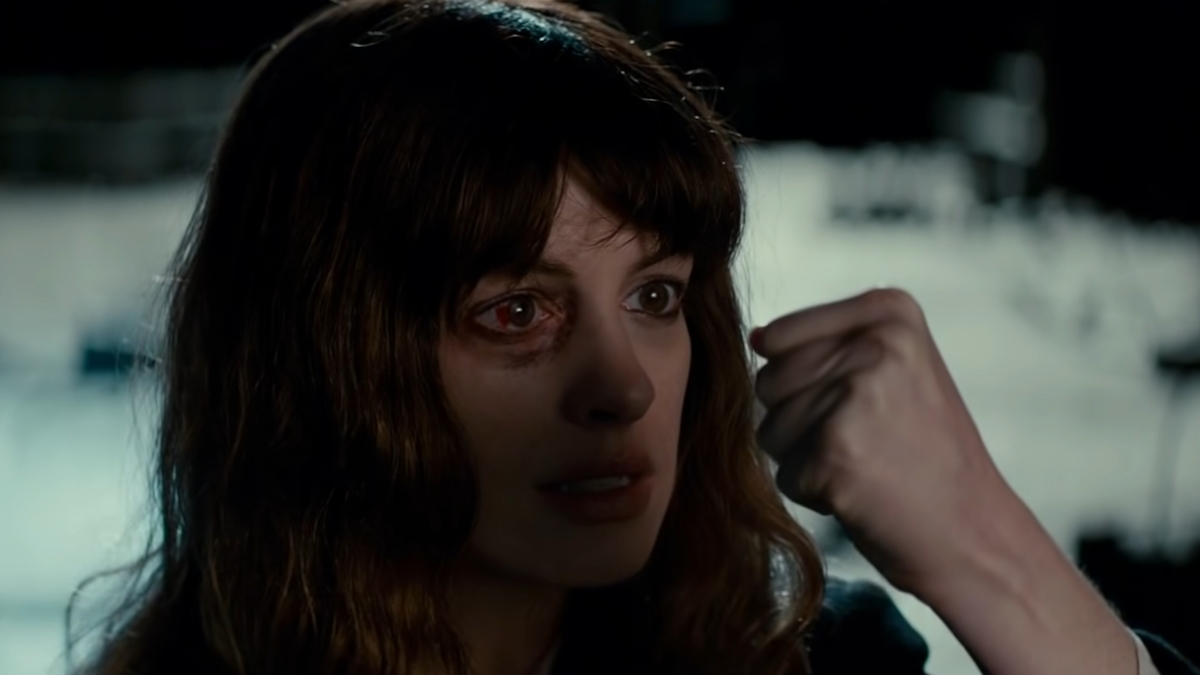
In Nacho Vigalondo’s 2016 drama, the never-ending battle between kaiju and mecha serves as an explosive allegory for gender politics and male insecurities. In Colossal, A-list star Anne Hathaway plays Gloria, an aimless writer who moves back to her New Hampshire hometown after a breakup. Soon, Gloria learns she is psychically linked to a giant monster that terrorizes South Korea. While Colossal is ultimately more interesting in its premise than its execution, Anne Hathway is reliably engaging as a troubled woman who learns to harness the monster that lives inside her.
30. Cyclops (The 7th Voyage of Sinbad, 1958)
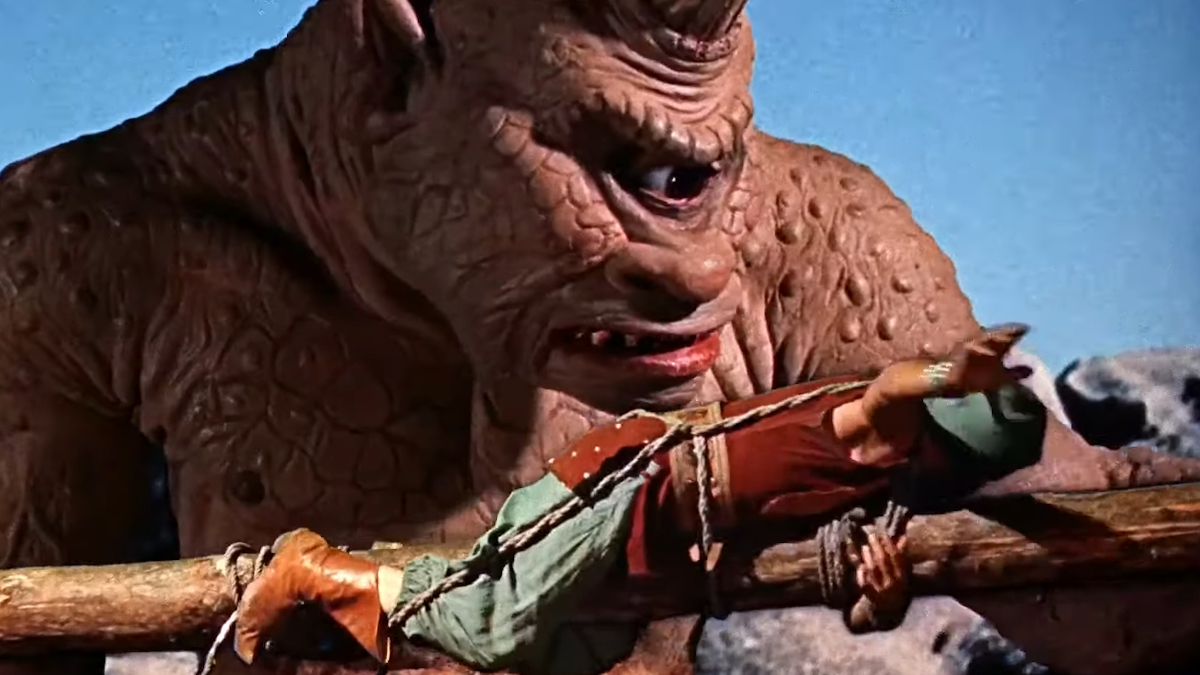
One of the most iconic creations ever by animator and filmmaker Ray Harryhausen remains the Cyclops, from the 1958 blockbuster The 7th Voyage of Sinbad. A technical achievement of stop-motion claymation, the Cyclops still looks alive and terrifying now as it did so many decades ago. Its specific interpretation of the creature from Greek myth, featuring its goat legs, crown of horns, and giant physical size, is foundational that still influences fantasy artists today.
29. The Blob (The Blob, 1958)
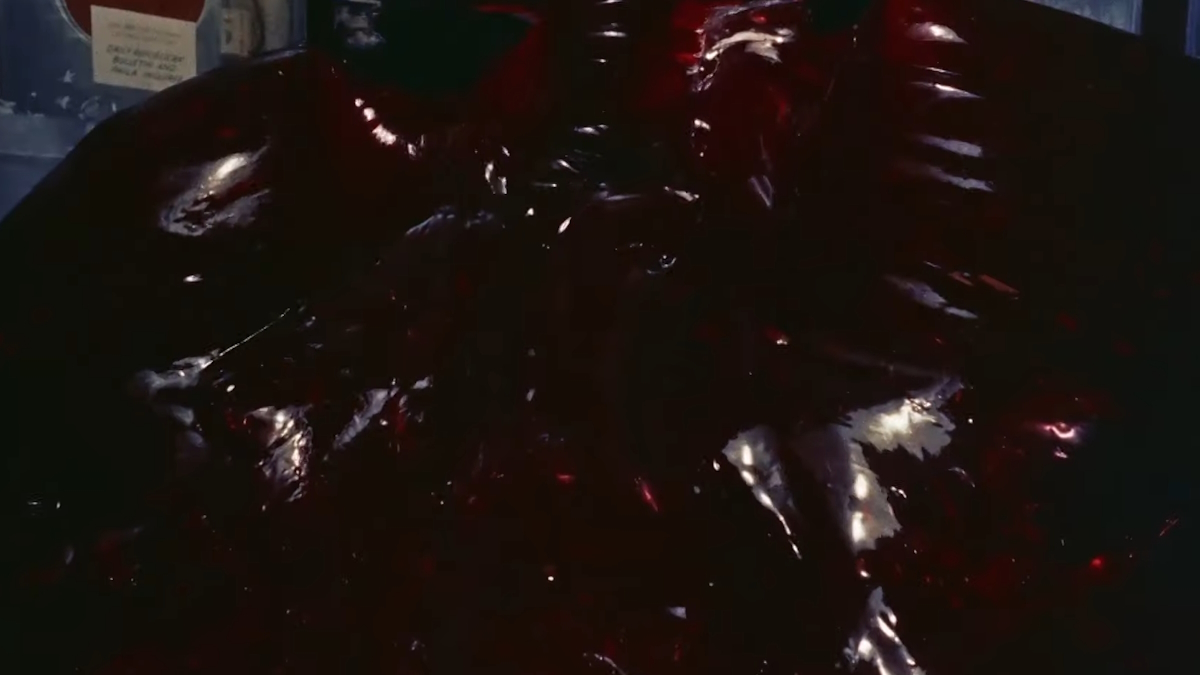
Modern audiences may laugh at a monster like The Blob. It’s easy to outrun, and how hard is it to scoop it into a giant jar? Still, the terror of an all-consuming alien goo is less about how to survive it than what it stands for. In the 1958 original film starring Steve McQueen, the Blob is a metaphor for communism’s methodical creep in Americana, while in the 1988 remake, its origins as a government weapon explores how people can be destroyed from within. The Blob has no personality and might be the easiest monster anyone can survive. But that doesn’t stop it from being an effective stand-in for all that scares us.
Sign up for the Total Film Newsletter
Bringing all the latest movie news, features, and reviews to your inbox
28. The Monster (A Monster Calls, 2016)
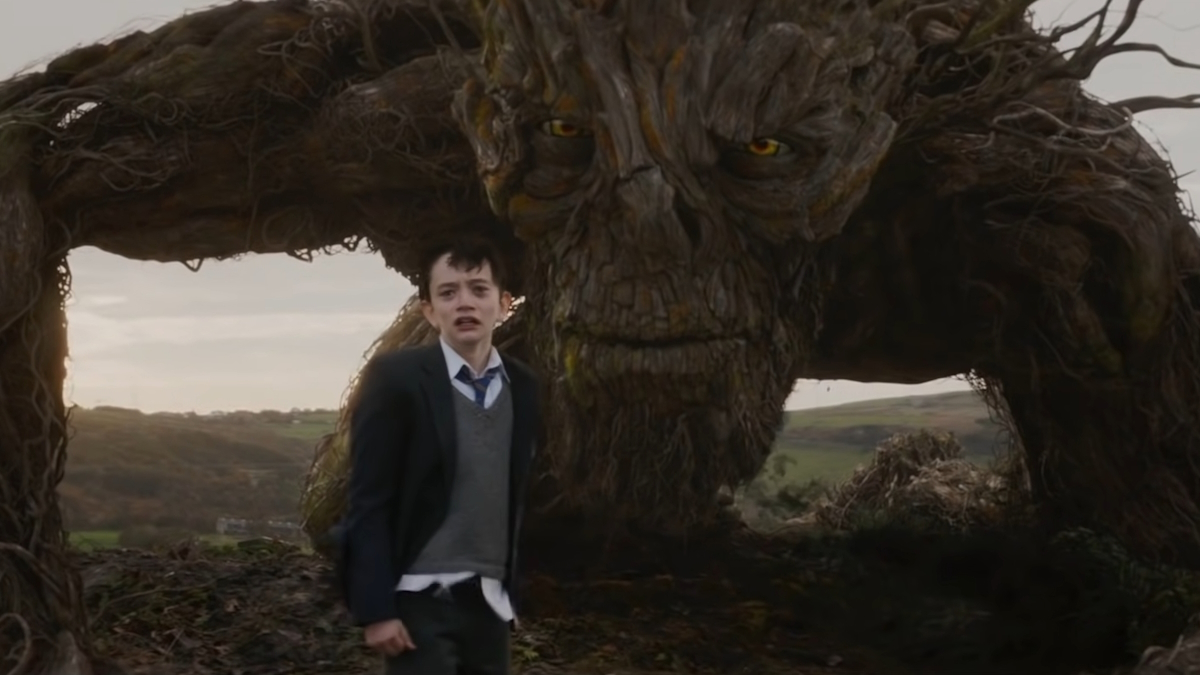
Boasting the authoritative voice of Liam Neeson, the beautifully-rendered “Monster” in J.A. Bayona’s 2016 fantasy drama A Monster Calls represents the imminent grief felt by a young boy, Conor O’Malley (Lewis MacDougall) for his cancer-stricken mother, played by Felicity Jones. Amid their last days together, Conor is at first terrorized by a giant talking yew tree, but they soon strike up a friendship as the Monster weaves him fairy tales of ancient kingdoms that are instructive to his future. Between its gorgeous visual effects work and Neeson’s thunderous voice-over performance, the plainly-titled “Monster” plays a crucial part in a movie about the strange things we inherit from our parents and how we prepare for a life without them.
27. The Bug (Men in Black, 1997)
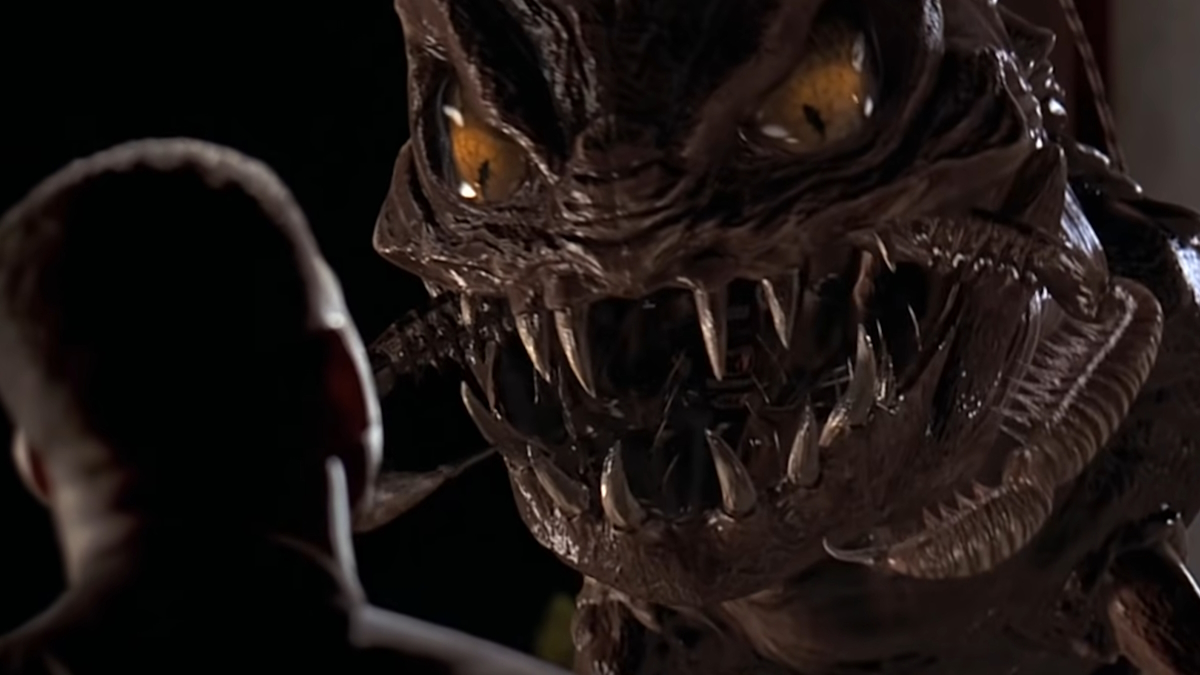
If and when mankind annihilates itself from nuclear apocalypse, a creature that will survive is the lowly cockroach. That makes it the ideal form for “The Bug,” the evil alien in Barry Sonnenfeld’s hit 1997 sci-fi buddy comedy Men in Black. Based on the comic book series, rookie MIB agent J (Will Smith) teams with veteran agent K (Tommy Lee Jones) to stop an alien insect from scouting a relic crucial to a galactic war. For a long stretch of the movie, the alien inhabits the body of an abusive farmer, with Vincent D’Onofrio playing a disgusting, walking corpse. The movie shifts into a higher gear when the alien sheds the fake skin to unveil its true self as a gnarly bug monster. Between D’Onofrio’s chaotic performance and the unforgettable final reveal, “The Bug” cements Men in Black as an all-time great high-concept genre piece.
26. Darkness (Legend, 1985)
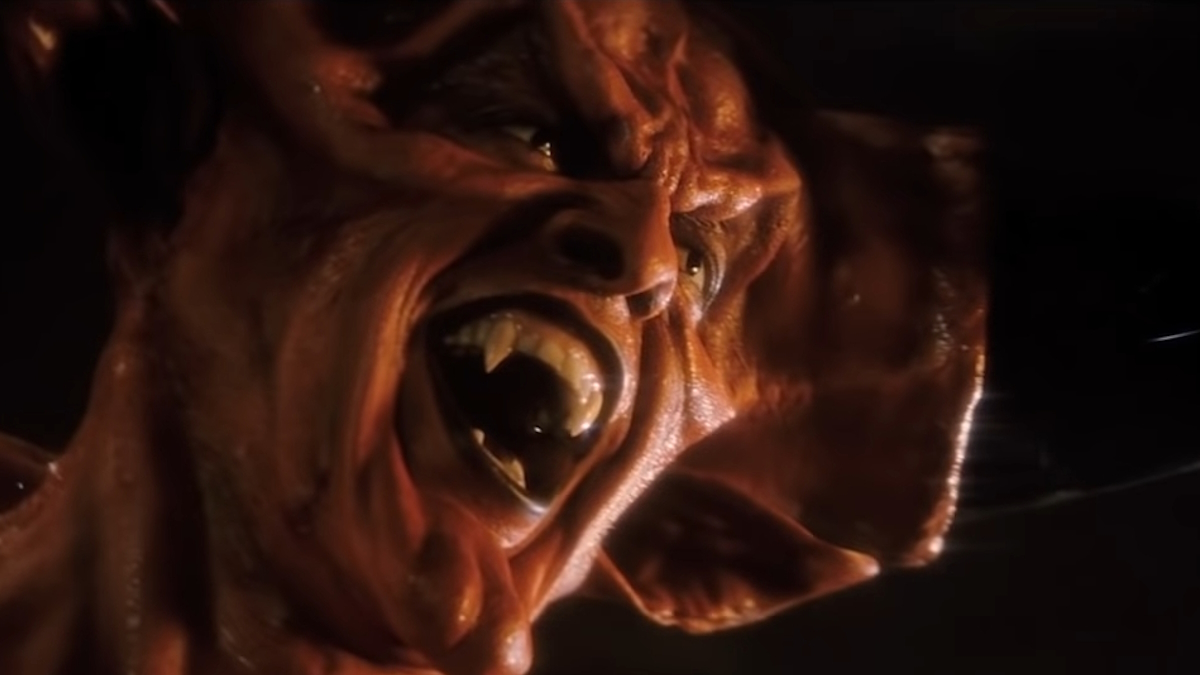
Ridley Scott’s fantasy epic Legend features one of the most unforgettable depictions of pure evil in any visual medium. Darkness, played by Tim Curry, is simply the picture-perfect definition of the Devil: giant black horns, an angular face, and a shredded masculine physique purposefully calling to mind depictions of Satan in Renaissance art. Honestly, it’s criminal Darkness is just a movie character and not a final boss in a Dark Souls game. While Legend is not a religious film, Darkness is more or less the Lucifer himself, complete with all his ego and dark humor.
25. The Mutant Bear (Annihilation, 2018)
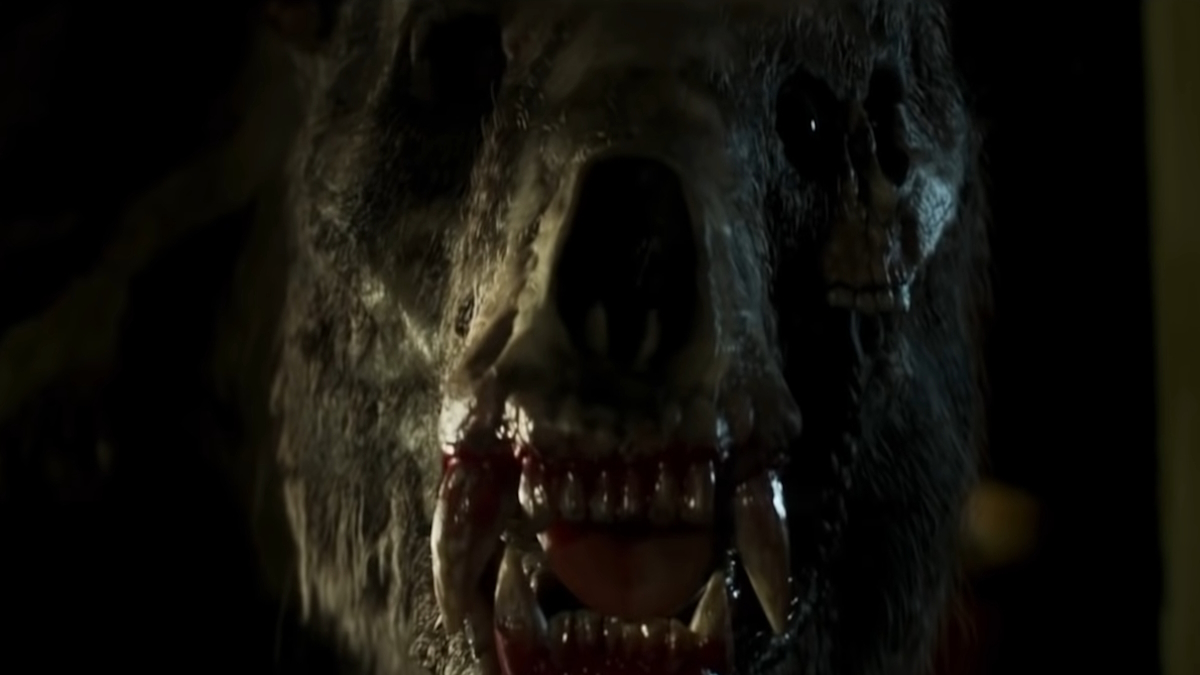
Be wary when you hear a voice scream for help, because it might not be who you think it is. In Alex Garland’s mesmerizing 2018 sci-fi horror Annihilation, a team of scientists and soldiers enter a quarantined zone called “The Shimmer,” where an alien presence has altered the fauna contained inside of it. Midway through the movie, the characters including lead protagonist Lena (Natalie Portman) are confronted by a terrifying mutant bear, who has an exposed skull and can emit a cry in the voice of one of their own team members. It’s one of the most startling and gripping encounters in the movie, and indeed all of sci-fi and horror.
24. Ivan Ooze (Mighty Morphin Power Rangers: The Movie, 1995)
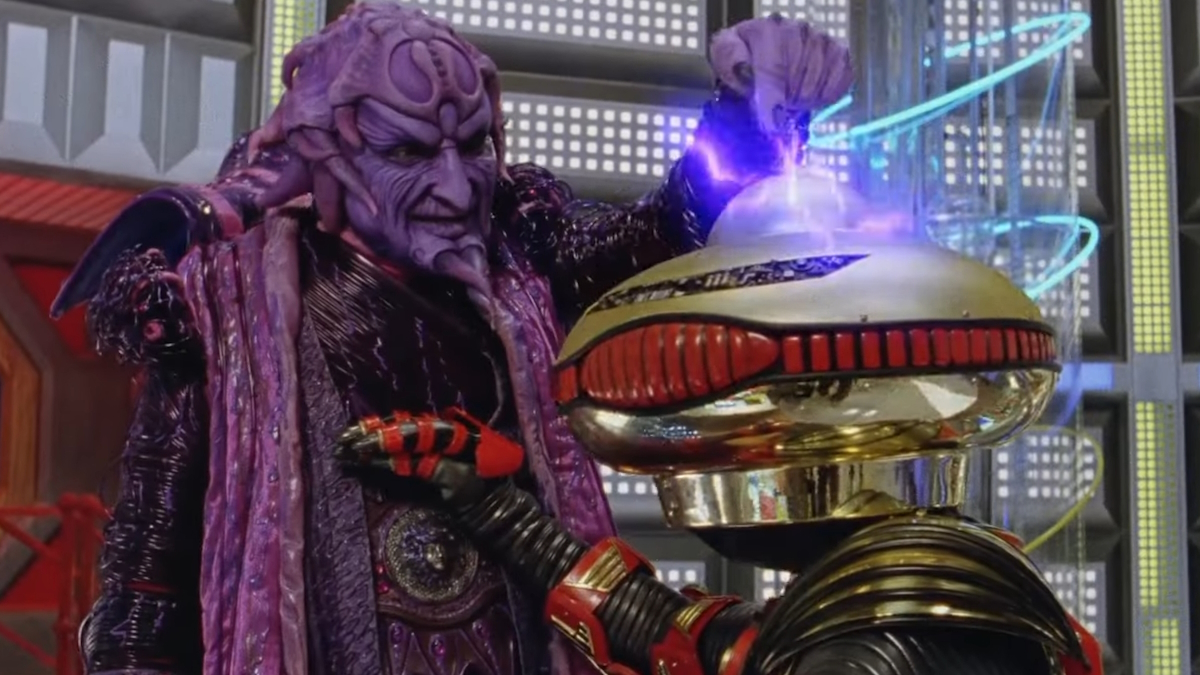
The Power Rangers franchise is famously an adaptation of a Japanese TV series, but the 1995 film Mighty Morphin Power Rangers: The Movie went in its own direction with an original, American-made villain: Ivan Ooze. Played by Paul Freeman, Ivan Ooze is a gooey, ancient shapeshifter with a flair for showmanship who is reawakened by the Power Rangers’ arch-enemies. An amalgamation of other movie monsters of yore – he’s got touches of them all, from The Blob to Dracula – Ivan Ooze stands on his own with his sharp wit and refusal to be stopped by teenagers in ninja costumes. All credit to Paul Freeman for a performance that was worth so much more than the cruddy CGI.
23. Candyman (Candyman, 1992)
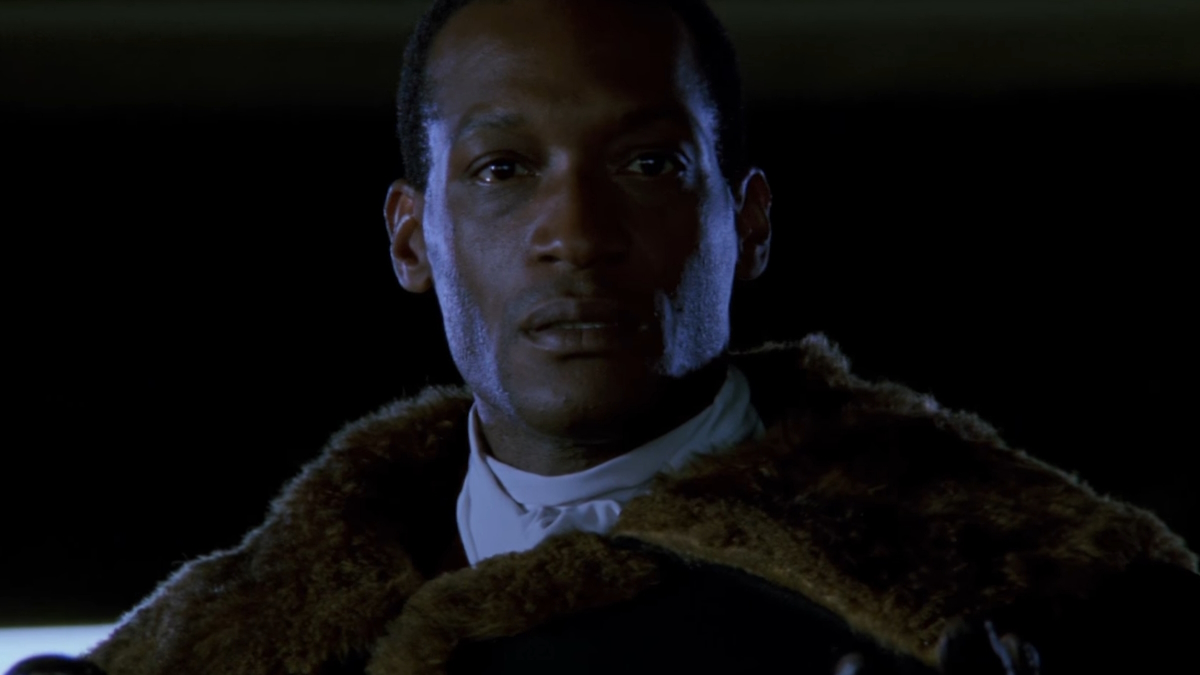
While Candyman comes from the imagination of English author Clive Barker, this smoldering killer, as played by Tony Todd, is a uniquely American monster born from the country’s unforgivable slave trade. A ghost of racial prejudices, the “Candyman” was a painter and son of an African-American slave who, after falling in love with a white woman, was killed by a lynch mob who smothered him in honey to attract bee stings. Now in modern day Chicago, the Candyman can be magically summoned in Bloody Mary-like fashion. In defiance to other cinematic slashers, Tony Todd’s Candyman is a stunning and stylish devil, his long fur coat and leather shoes giving him an air of class as he emerges from the dark.
22. Medusa (Clash of the Titans, 1981)
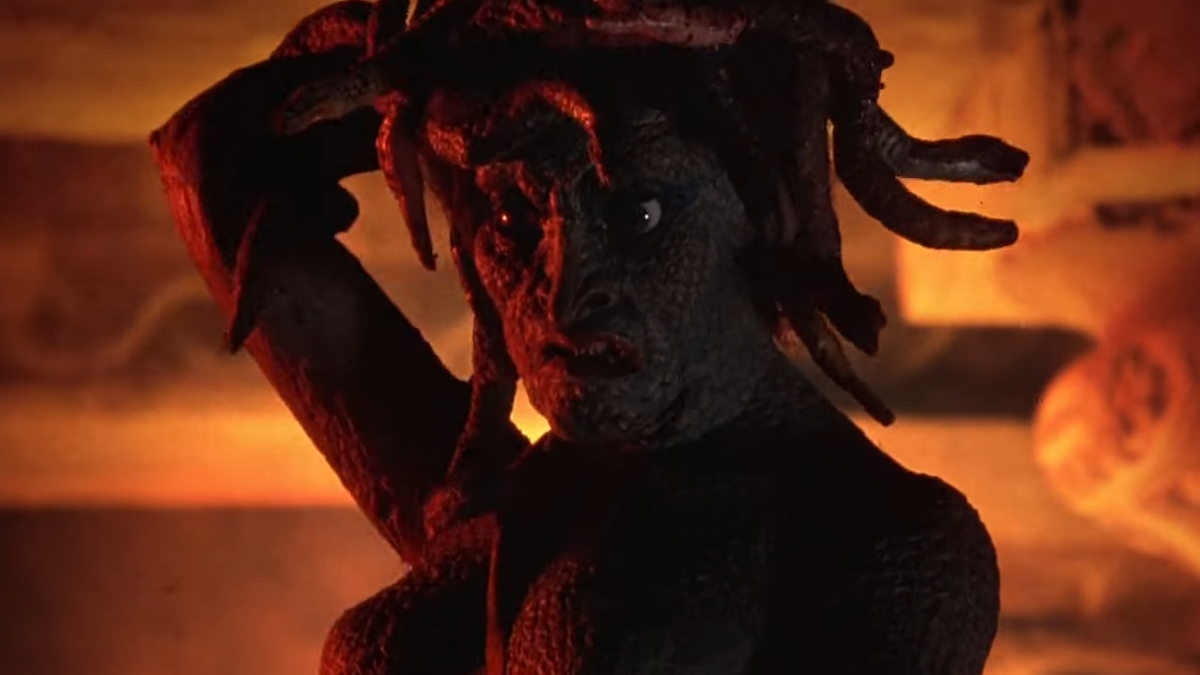
In what is pretty much the final rodeo for Ray Harryhausen, the 1981 fantasy epic Clash of the Titans has some of the most unforgettable monsters ever put to screen. At the top of them all is the fearsome Gorgon Medusa. True to her lore in Greek mythology, Medusa is a snake-like feminine monster whose gaze can turn onlookers into stone. As rendered by Harryhausen, Medusa is a bewitching monster whose uncanny movement and sinister features create a striking image that sears itself into the memory banks. While the heroic Perseus (played by Harry Hamlin) beheads her to use her cursed eyes as his own weapon, his suspenseful encounter with Medusa in her lair at the River Styx is enthralling as it is exciting.
21. The Babadook (The Babadook, 2014)
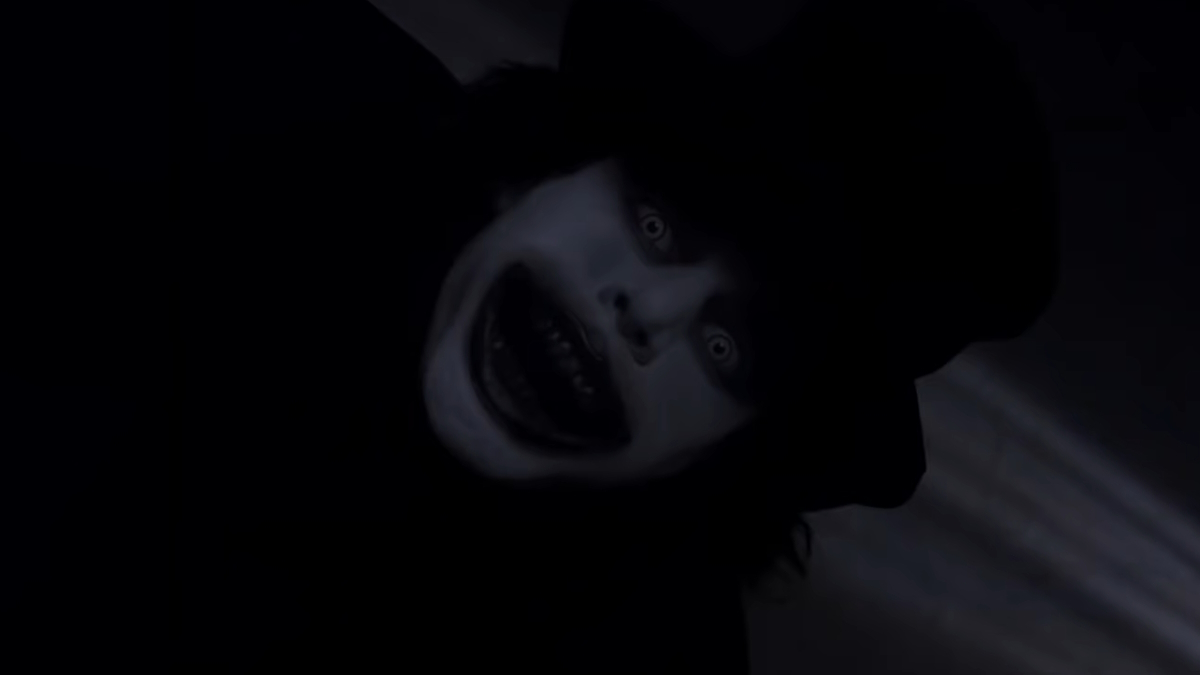
In Jennifer Kent’s modern classic Australian horror movie The Babadook, a single mother and widower struggles to raise her young son alone while a strange monster stalks them everywhere. In concert with the movie’s legitimate hair-raising scares crafted through careful atmospherics is the Babadook himself, an inexplicable thing of darkness whose squat body, slender limbs, and top hat foster the feeling of an unholy storybook villain. As a metaphor for all-consuming grief, The Babadook is the rare movie monster whose victims don’t learn how to defeat it but simply learn to live with it.
20. Bruce the Shark (Jaws, 1975)
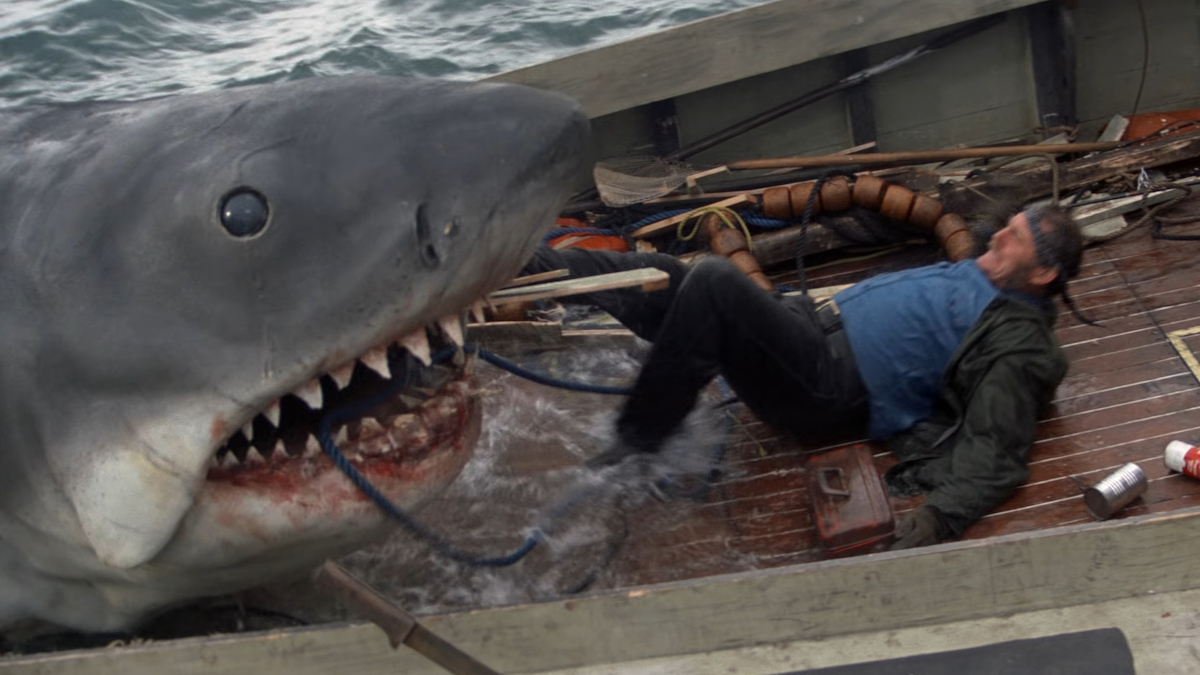
One of the most menacing monsters ever in movies earned its everlasting mystique thanks to some irony. During production of Steven Spielberg’s 1975 summer epic Jaws, which tells of a man-eating great white shark killing New England beachgoers, the prop shark (nicknamed “Bruce” after Spielberg’s lawyer) kept breaking down. To get around its malfunctioning, Spielberg chose to depict the shark onscreen as minimally as possible. The result is an atmosphere of inescapable dread that wholly defines Jaws, an anticipation of death and destruction that’s always lurking below. Coupled with the simple matter that the shark in Jaws is just a feral creature minding its business, Spielberg’s masterwork exists to say that mankind always yields to the cruelty of nature.
19. Pazuzu (The Exorcist, 1973)
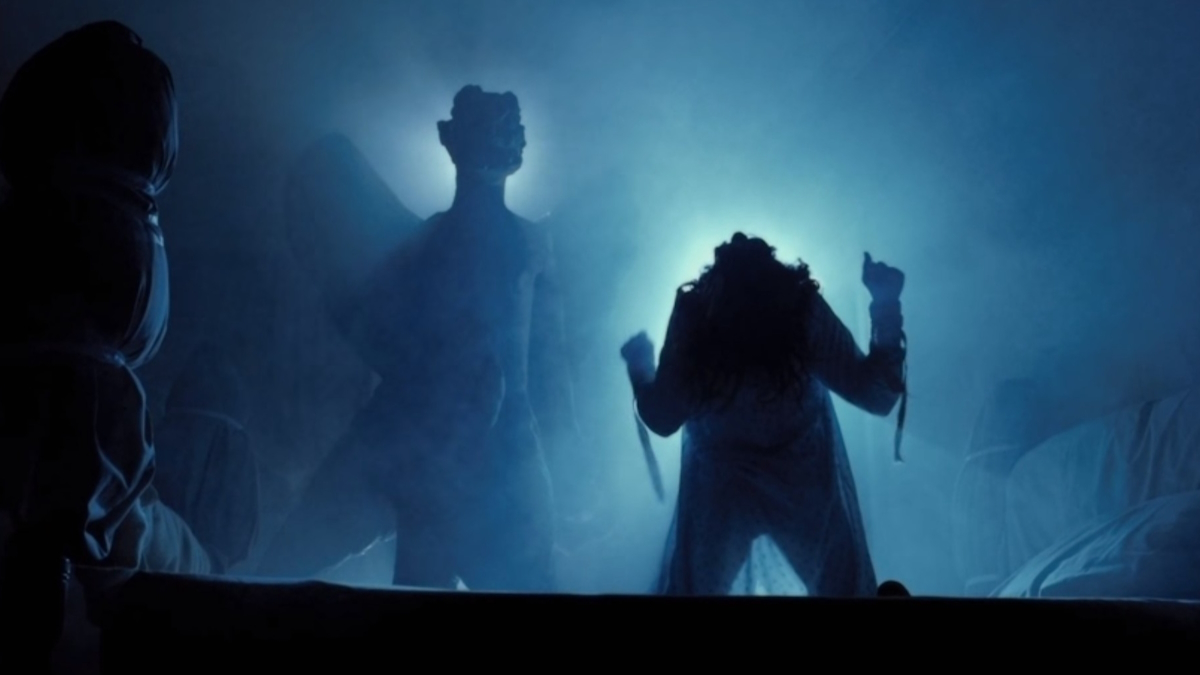
Few things are as scary as the corruption of youth. In William Friedkin’s eternally beloved horror movie The Exorcist, based on William Peter Blatty’s novel, 12-year-old Regan (Linda Blair) becomes possessed by Pazuzu, a Mesopotamian deity. While Pazuzu himself is only “seen” for a brief moment (with actress Eileen Dietz in striking pale white makeup), Pazuzu overtakes Regan’s body, ravaging her with scars, blemishes, and odors. Pazuzu’s unmistakable voice is a combination of Blair’s and other actors Ron Faber and Mercedes McCambridge, fostering the feeling that Regan has succumbed to underworld entities that science cannot explain. An overlooked aspect to Pazuzu is how funny he can be, being a total troll who cusses like a drunk sailor and taunts priests with sarcasm. “What a lovely day for an exorcism,” indeed.
18. Red (Us, 2019)
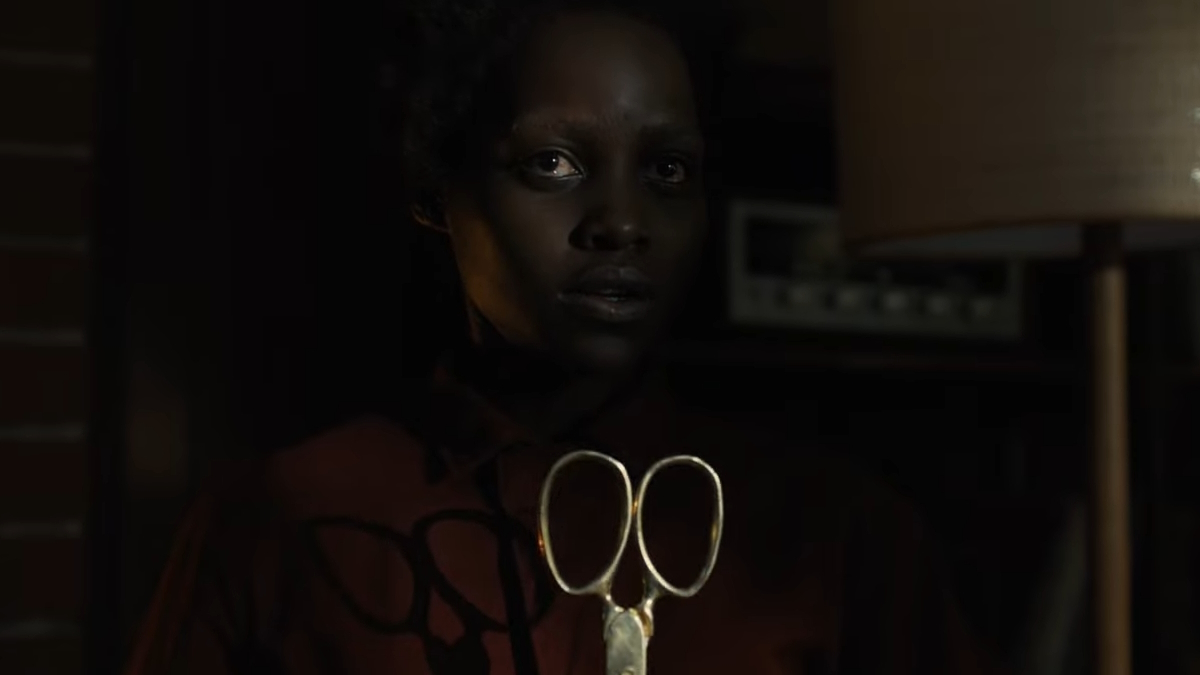
In Jordan Peele’s sophomore horror film, the writer/director reinvigorates our fear of doppelgangers as ill omens with a masterful Lupita Nyong’o doing double duty as the movie’s “final girl” and monster. In Us, a population of doppelgangers called “Tethered” live far underground, in anticipation for the day they rise to the surface. The leader of the Tethered is Red, a double for a woman named “Addy” who unlike other Tethered can speak (albeit with great difficulty). Nyong’o earns her place in the canon of all-time great movie monsters in her role as Red, her striking white eyes and guttural voice creating an embodiment for the uncanny valley. Without giving too much away, let’s just say Addy’s meeting with Red takes on a different meaning when, at the end, you find this instance of a home invasion is not all that it seems.
17. Jason Voorhees (Friday the 13th Part 2, 1981)
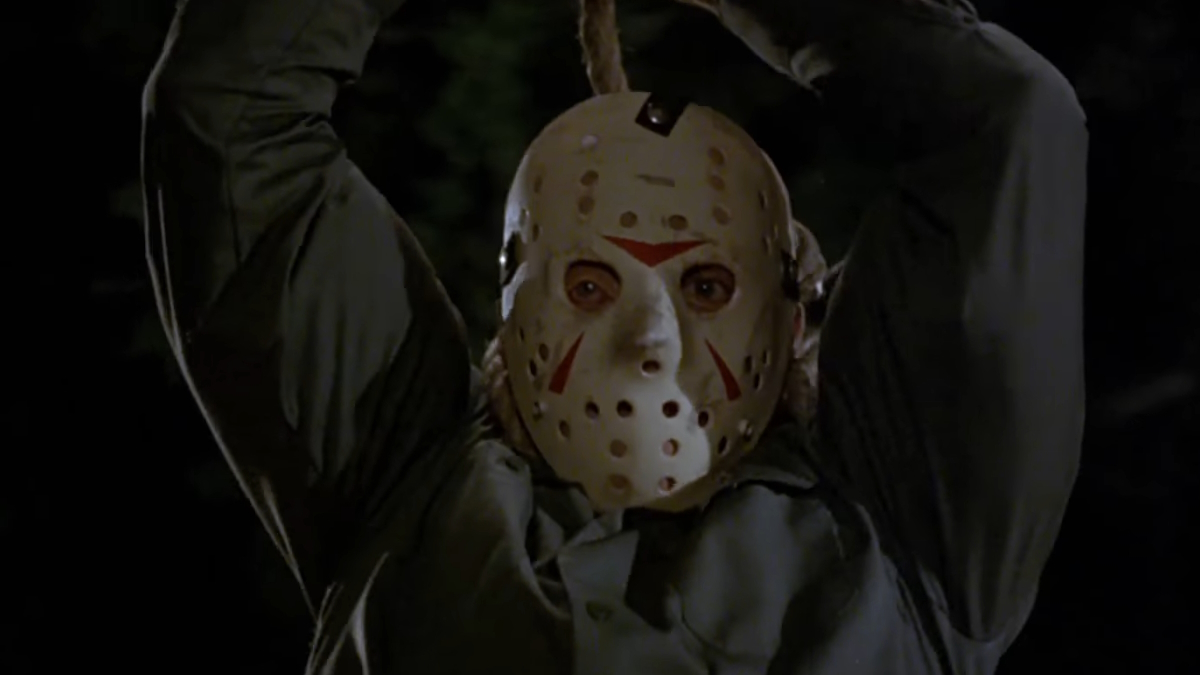
One of the defining slashers in history is Jason Voorhees, whose towering physical size contrasts with an almost childlike personality and curiosity. A deformed child who drowned due to the irresponsibility of hormonal camp counselors, Jason’s mother first serves as the main villain in the franchise’s first installment while Jason himself rises to prominence in the sequel. Jason Voorhees was not the first slasher in movies, and arguably comes off a bit too derivative of another masked killer, Michael Myers. But Jason’s regretful backstory, superhuman abilities, and iconic vintage hockey mask have made him one of the most versatile killers around.
16. Gozer the Gozarian, the Terror Dogs, and the Stay Puft Marshmallow Man (Ghostbusters, 1984)
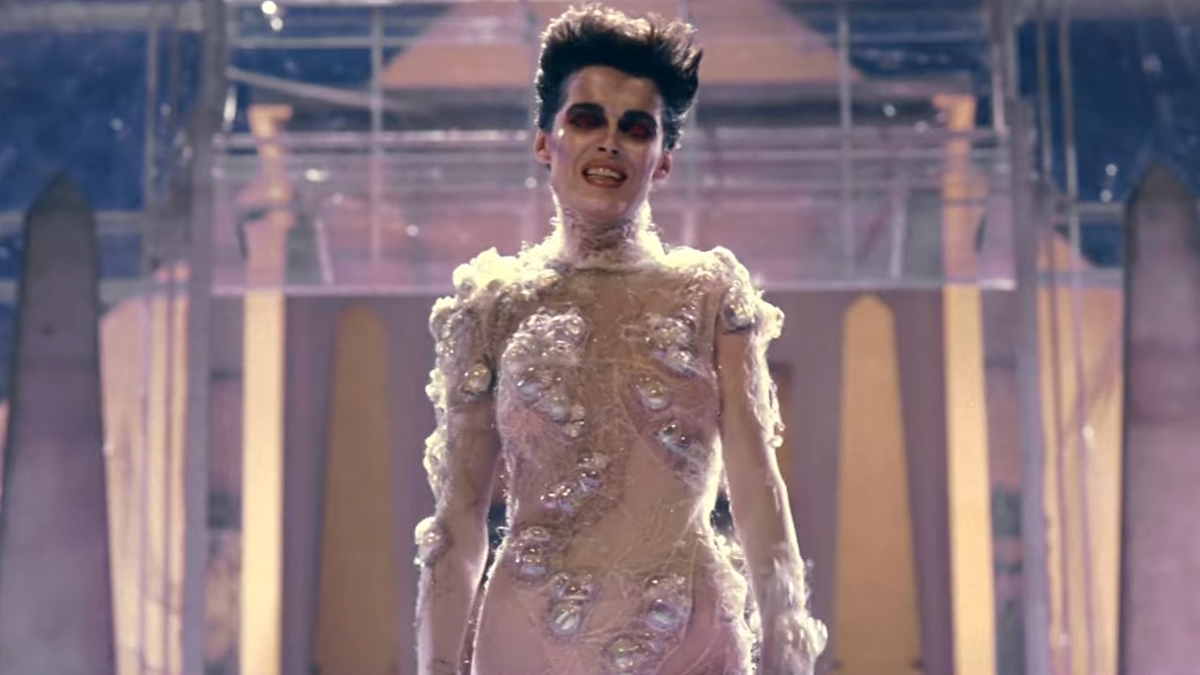
In the sci-fi comedy classic Ghostbusters, from writer and star Dan Aykroyd and director Ivan Reitman, ancient Sumerian (not Babylonian) gods unleash ghosts in New York City, leaving it up to the Ghostbusters to clean up the town. While the bad guy behind it all is Gozer, played by model Slavitza Jovan and voiced by Paddi Edwards, the monster most folks remember is the giant Stay Puft Marshmallow Man, the snack mascot turned into a giant of destruction. Between that, Gozer’s Lovecraft-like presence, and legitimately impressive stop-motion “Terror Dog” monsters who leap right out of a medieval painting, they all collectively elevate Ghostbusters as not just a great comedy, but a great monster fiction piece too.
15. Pennywise the Dancing Clown (IT, 2017)
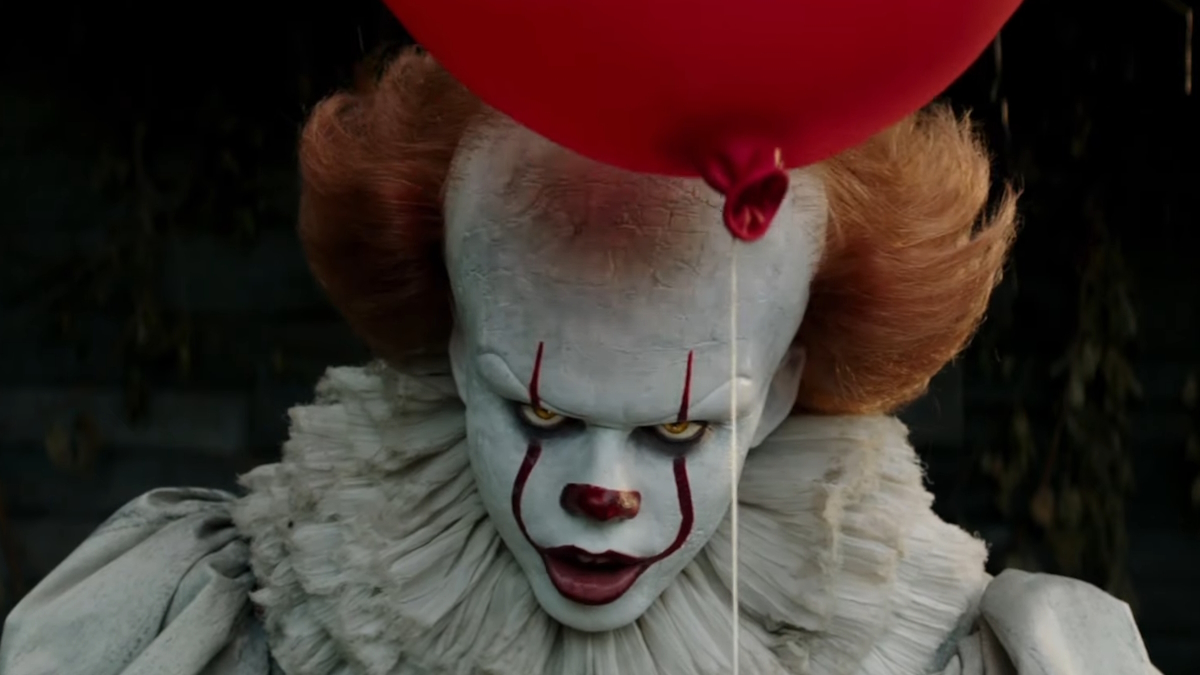
An ancient shapeshifting entity whose feeding cycle haunts the unlucky residents of Derry, Maine, It – who often takes the form of the dancing clown Pennywise – is a frightening metaphor for collective traumas and the dangers of keeping secrets even from ourselves. While originally played by Tim Curry in a 1990 TV miniseries, actor Bill Skarsgård brought to life an unforgettably baroque and eldritch Pennywise in Andy Muschietti’s epic 2017 film version, where his black humor seems to entertain only himself and his dancing feeling like part of an ancient ritual. Fun fact: When Stephen King was writing the original novel, he at first wrote Pennywise as a troll based on the children’s fairy tale “Three Billy Goats Gruff.” A hunch told him to rewrite Pennywise as a clown, believing they were scarier to more children. One wonders exactly what whispered into King’s ear to bring Pennywise to life in the first place.
14. The Amphibian Man (The Shape of Water, 2017)
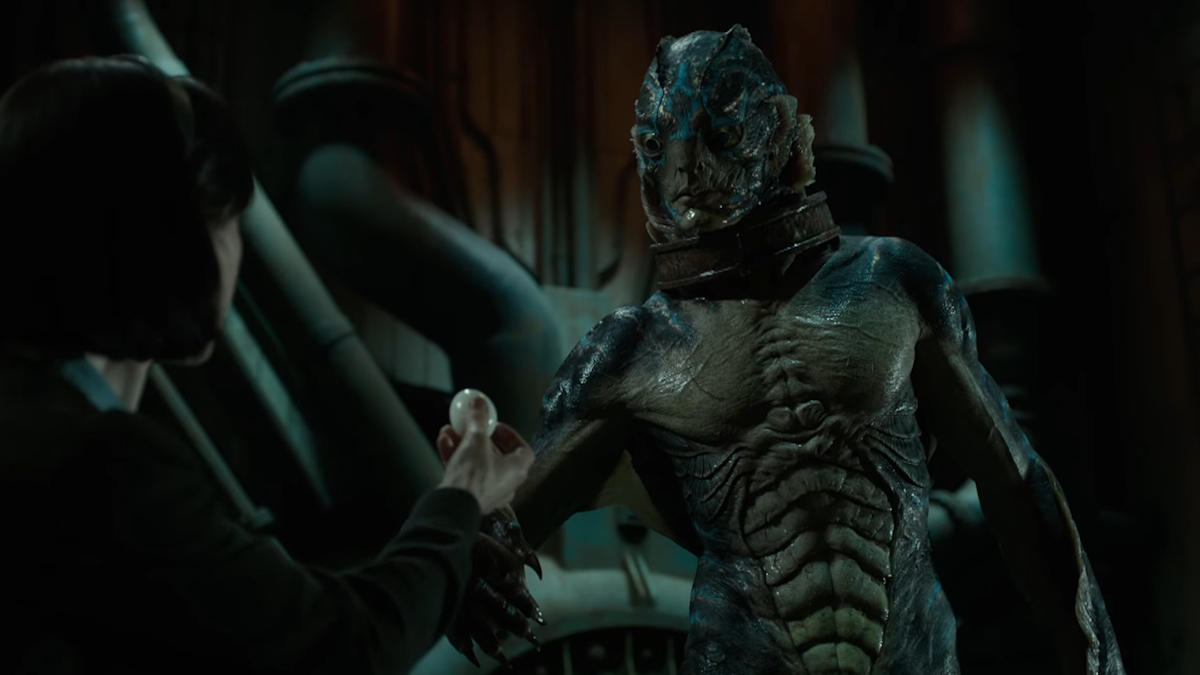
The 1954 horror film Creature From the Black Lagoon is one of the last hurrahs for the Universal Monsters, being the franchise’s final movie before decades of dormancy. It bowed out with one of its most memorable entities ever: the half-human, half-fish monster Gill-man (played by Ricou Browning and Ben Chapman) who terrorizes scientists and lusts after beautiful Julie Adams in the Amazon. Years later, a young Guillermo del Toro watched the movie and saw something in it that no one else did: A romance. In 2017, del Toro directed his Oscar-winning movie The Shape of Water, essentially a fanfiction retelling where the monster and the beautiful girl aren’t scared of each other but actually fall in love. With Doug Jones in his most masculine role yet, a beast becomes an unlikely figure of tenderness and eroticism, an illustration of love being a nourishing force we don’t fully comprehend but embrace with passion.
13. T-1000 (Terminator 2: Judgement Day, 1991)
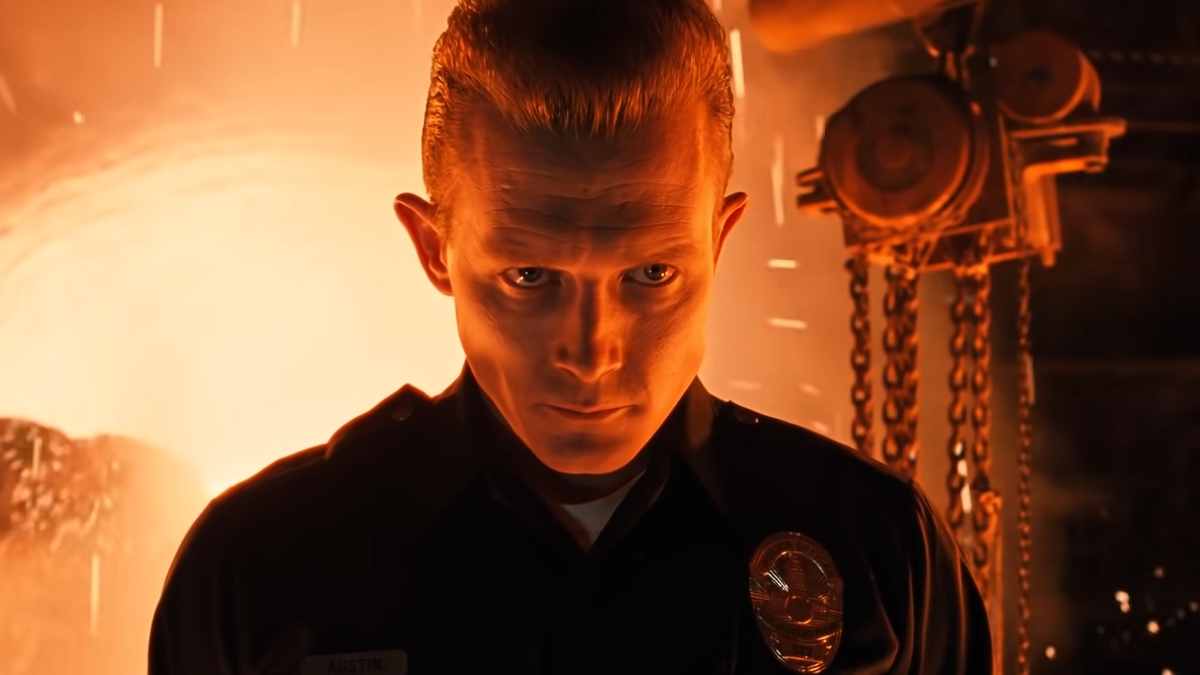
In James Cameron’s film that proved sequels should be bigger and better than the original, Arnold Schwarzenegger plays a reprogrammed T-800 who protects a young John Connor (Edward Furlong) and mother Sarah (Linda Hamilton) from the advanced T-1000, played by Robert Patrick. A liquid-based killing machine, the T-1000 is not just a really cool bad guy but a jaw-dropping marvel of visual effects artistry. To watch the T-1000 move and hunt down Arnold Schwarzenegger in 1991 was to witness the bleeding edge of what digital moviemaking was capable of.
12. Sadako (Ring, 1998) and Samara (The Ring, 2002)
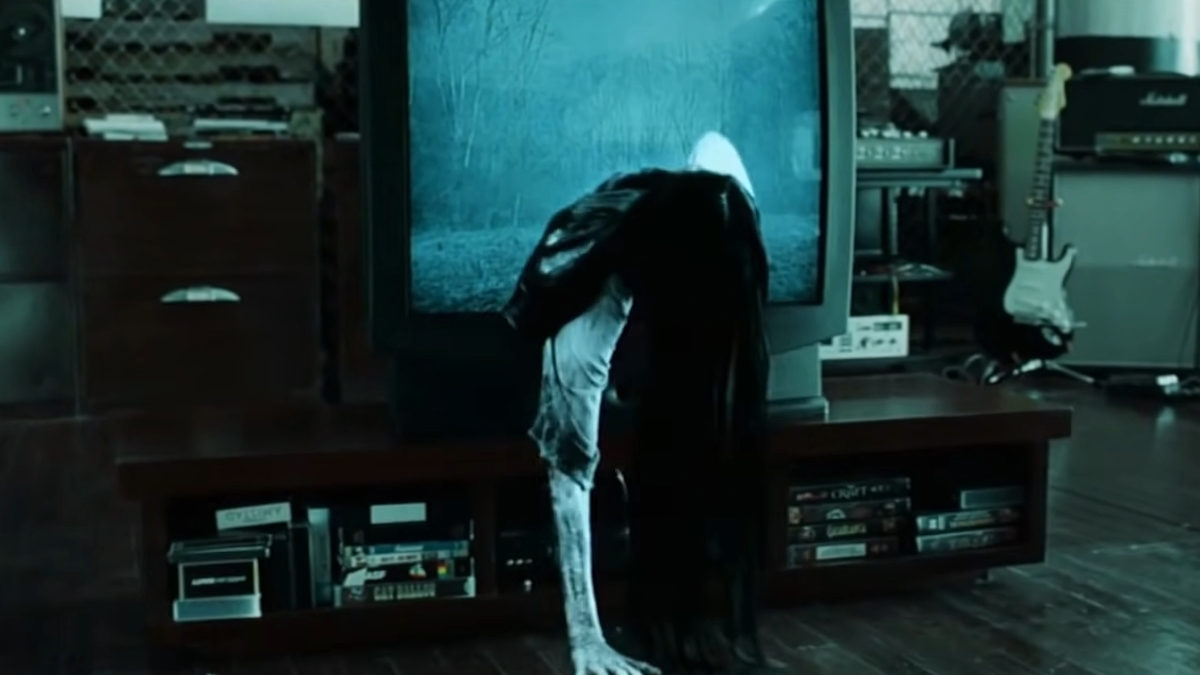
Regardless of which side of the Pacific Ocean you find her, you never want to see her. From Koji Suzuki’s horror book series is Sadako, a vengeful ghost of a young girl who uses cursed video tapes to create a chain of victims. First played by Japanese actress Rie Ino in the 1998 film Ring, she was later played by other actresses before the story went Hollywood, with Daveigh Chase as her American counterpart Samara in Gore Verbinski’s 2002 remake The Ring. A specter embodying late 20th century visual media, Sadako/Samara’s unique powers – being that she returns one week after you see her cursed tape – creates paranoia and suspense with a ticking clock hanging over its victims. This creepy girl, who crawls from a well with soaking black hair, proves no one should underestimate the strange things they see because it just might come back to kill them.
11. Jean Jacket (Nope, 2022)
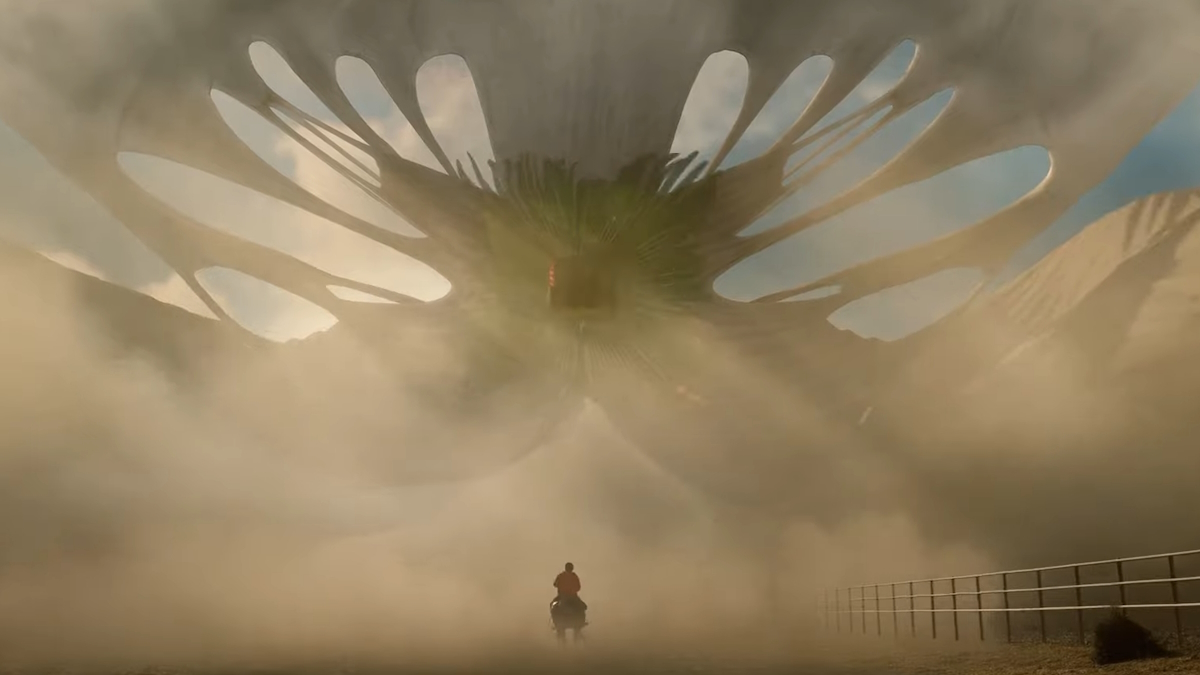
In Jordan Peele’s breathtaking sci-fi horror Nope, a giant alien nicknamed “Jean Jacket” first takes on the camouflage disguise of a cloud before evolving into its final form, a billowy, balloon-like monstrosity that evokes God’s angels as they are described in the Book of Ezekiel. A devouring entity who sustains on organic matter, Jean Jacket is most frightening when Jordan Peele takes audiences inside its digestive system, to bear witness to people’s hysterical final cries as they are slowly consumed. In most monster movies, victims who are eaten are usually safely dead before they’re swallowed up. (See: Jurassic Park.) But in Nope, victims have time to comprehend what’s happening and are powerless to stop it. It’s truly scary to consider one’s imminent demise when a merciful quick death is impossible to be granted.
10. Alien Xenomorph (Alien, 1979)
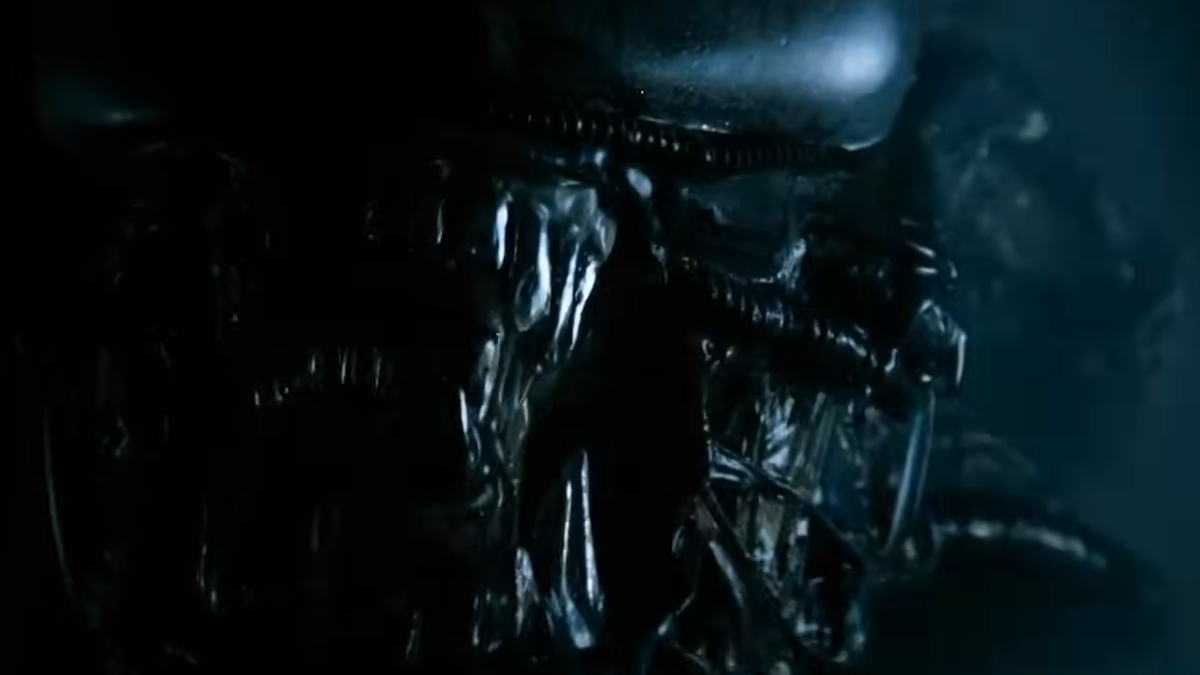
In Ridley Scott’s seminal sci-fi horror Alien, the film introduces audiences to a terrifying, acid-based alien species known as Xenomorphs. Before the film spawned a franchise of sequels, Scott’s first installment focuses on just one Xenomorph who ravages the crew of the commercial ship Nostromo. Inspired by the transgressive work of artist H.R. Geiger, the Xenomorph’s behavior and physical features – not to mention tactile rich details of blood, scales, silver teeth, and tissue – allows the movie to encompass bigger themes regarding gender, more specifically the violence of conception and pregnancy. The Alien Xenomorph itself is a terrifying sight to behold as a perfect illustration of chaotic neutral villainy.
9. The Wolf Man (The Wolf Man, 1941)
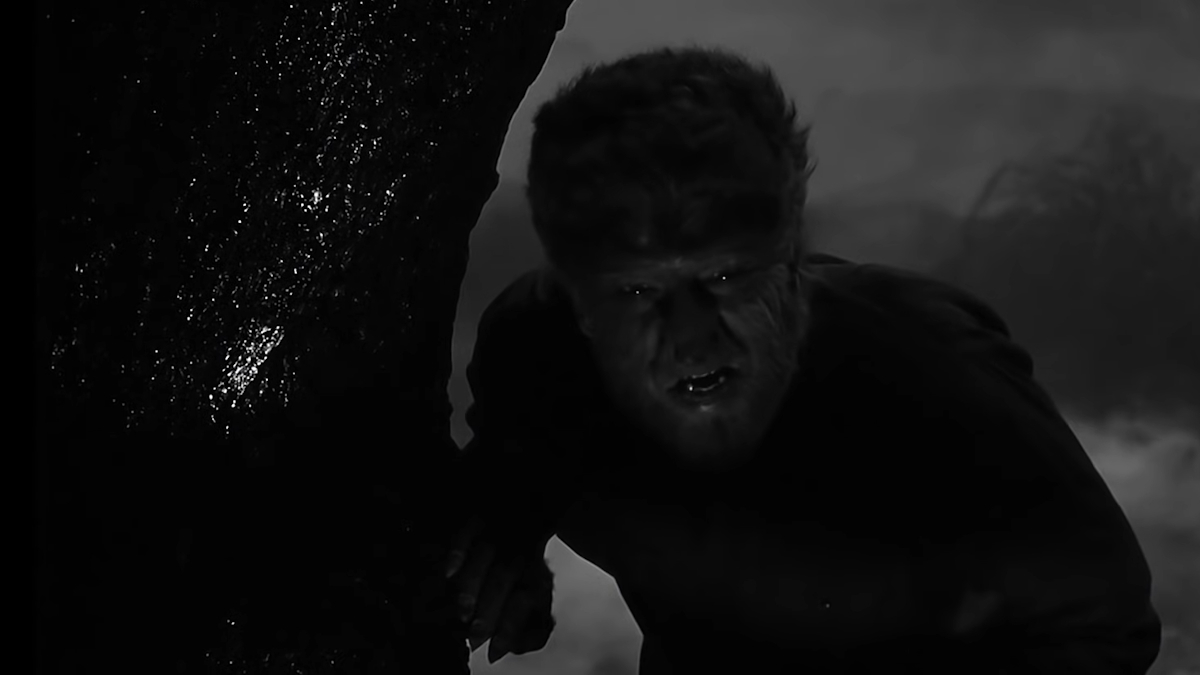
There are countless werewolves in movie history, but all of them howl at the honor of Lon Chaney in The Wolf Man. One of the most important figures in the Universal Monsters, the Wolf Man remains arguably the definitive werewolf in cinema even if his successors are more animalistic in their interpretations. Very primitive special effects of Hollywood Golden Age filmmaking simply cannot derail the surviving atmosphere that surrounds Chaney’s Wolf Man, whose hunt for living meat under moonlit skies is an image that endures today.
8. The Predator (Predator, 1987)
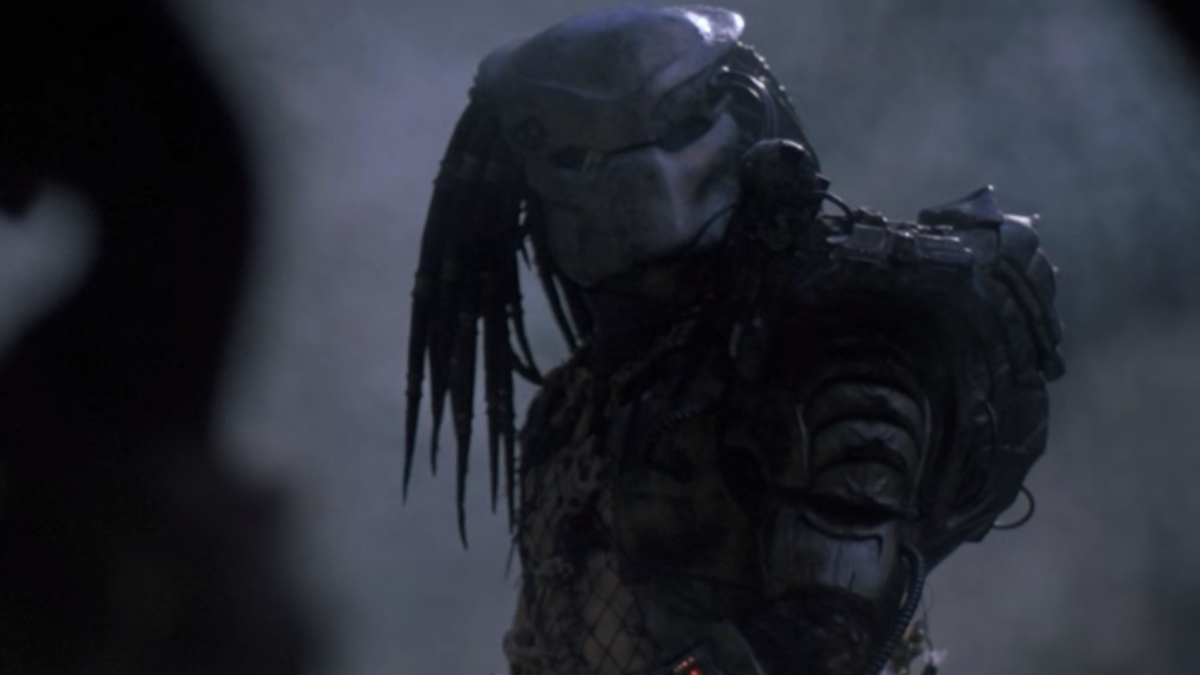
It’s the perfect killing machine, an alien who hunts and kills for sport. Of course, only Arnold Schwarzenegger is strong enough to fight him one-on-one. In John McTiernan’s action classic, Schwarzenegger leads an elite military rescue team in South America, only to encounter an otherworldly presence deep in its jungles. Originally envisioned as a rat-like creature, the Predator got a serious makeover during production to become the bug-like hunter with fangs and dreadlock hair we know it today. The most striking thing about the Predator is that, unlike most other movie monsters, this one is highly intelligent, being of an unknown species with unknown technology. Despite the abundance of sequels, there’s still little we know about them – only that they can bleed, so you can kill it.
7. Freddy Krueger (A Nightmare on Elm Street, 1984)
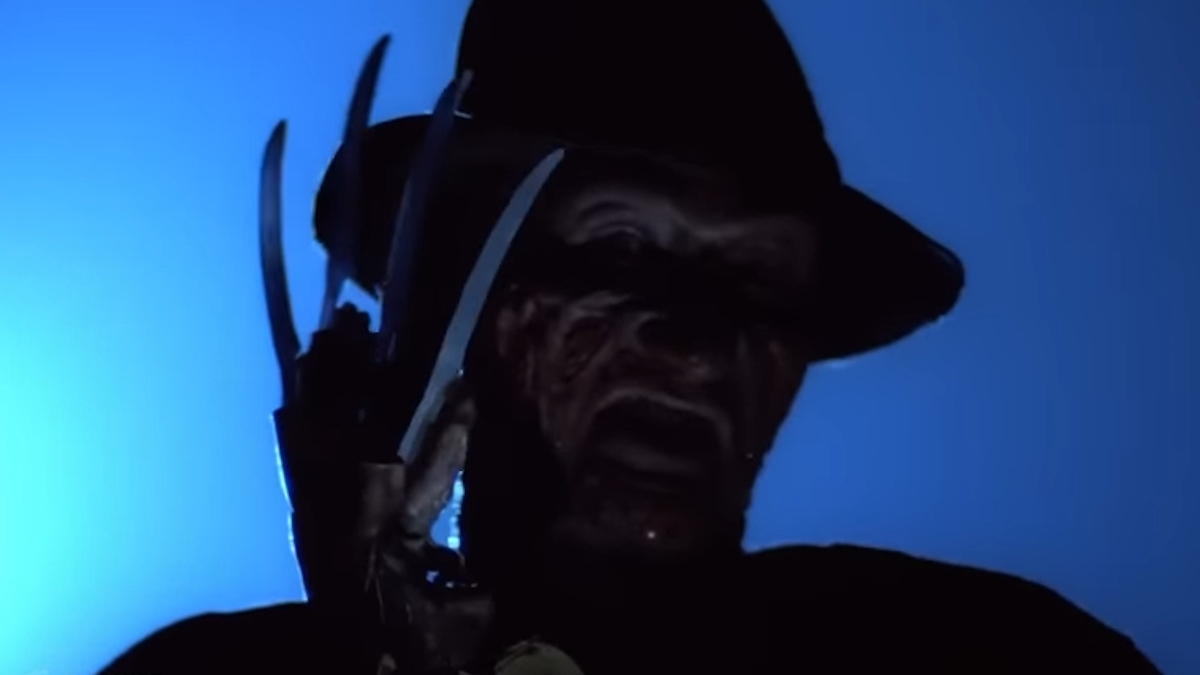
A rival to Jason Voorhees and Michael Myers is the evil dream stalker Freddy Krueger, played with aplomb by Robert Englund and whose origin story is harrowing to even describe. In the first film written and directed by Wes Craven, Freddy Krueger is introduced as a child predator who, upon his death, obtains the power to kill the youth of Elm Street in their dreams. A most memorable monster, Freddy descends from a traumatic incident in Craven’s childhood as well as Craven learning about Cambodian refugees who died in their sleep. While Freddy is a real bastard, you can’t help but almost love him as he cracks jokes before offing teenagers in unforgettable ways. Adding to his mystique is how Freddy reclaims his original darkness in Craven’s final sequel, New Nightmare, where Freddy breaks free into our real world.
6. The Pale Man (Pan’s Labyrinth, 2006)
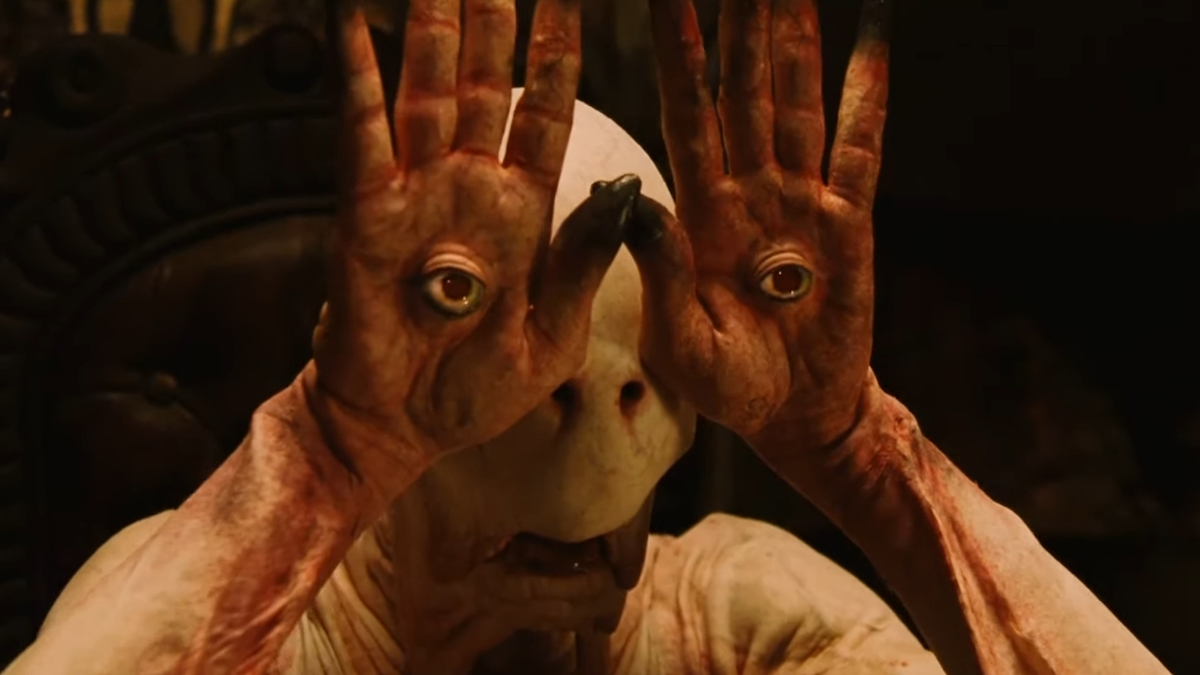
A synthesis of Guillermo del Toro’s imagination and Doug Jones inhabiting the scariest role of his career is “The Pale Man,” a physical representation of del Toro’s condemnation against a greedy elite. In this dark fairy tale set during Francoist Spain, a young girl named Ofelia (Ivana Baquero) enters a secret world of magic and monsters, including an encounter with the eerie “Pale Man.” A slender ghoul whose eyes are in his hands, del Toro’s metaphor is that of institutional greed. The selfishness of men comes from all they can see and touch. They lord over riches for themselves, forbidding anyone else to enjoy it; they rather let it sit untouched than share with those who hunger for it most.
5. King Ghidorah (Ghidorah, the Three-Headed Monster, 1964)
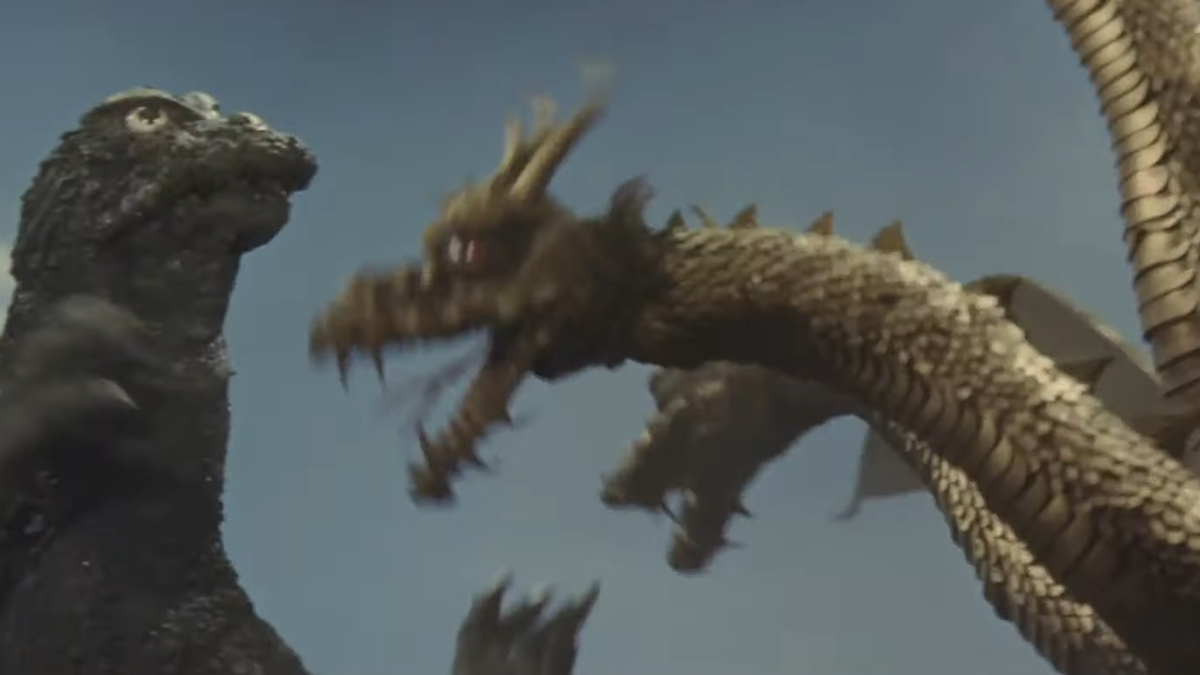
Godzilla’s eternal rival is and always has been Ghidorah, a dragon-like creature inspired by the deity Orochi in Japanese folklore as well as the Lernaean Hydra in Greek myth. A three-headed dragon with large wings and no arms, Ghidorah is an alien regularly pitted against Godzilla. It makes its first appearance in the 1964 film Ghidorah, the Three-Headed Monster, a spin-off of Toho’s Godzilla series where the King of the Monsters appears to thwart Ghidorah’s attempts to destroy Earth. Ever since that movie, Godzilla and Ghidora have spent many years locked in bitter conflict, with Ghidorah representing pure evil whenever Godzilla takes on a more heroic role in the plot. His menacing dragon heads and screeching roars counter Godzilla’s own, making Ghidorah the only one in Godzilla’s rogues gallery to feel like a legitimate threat.
4. Dracula (Dracula, 1931 and Horror of Dracula, 1958)
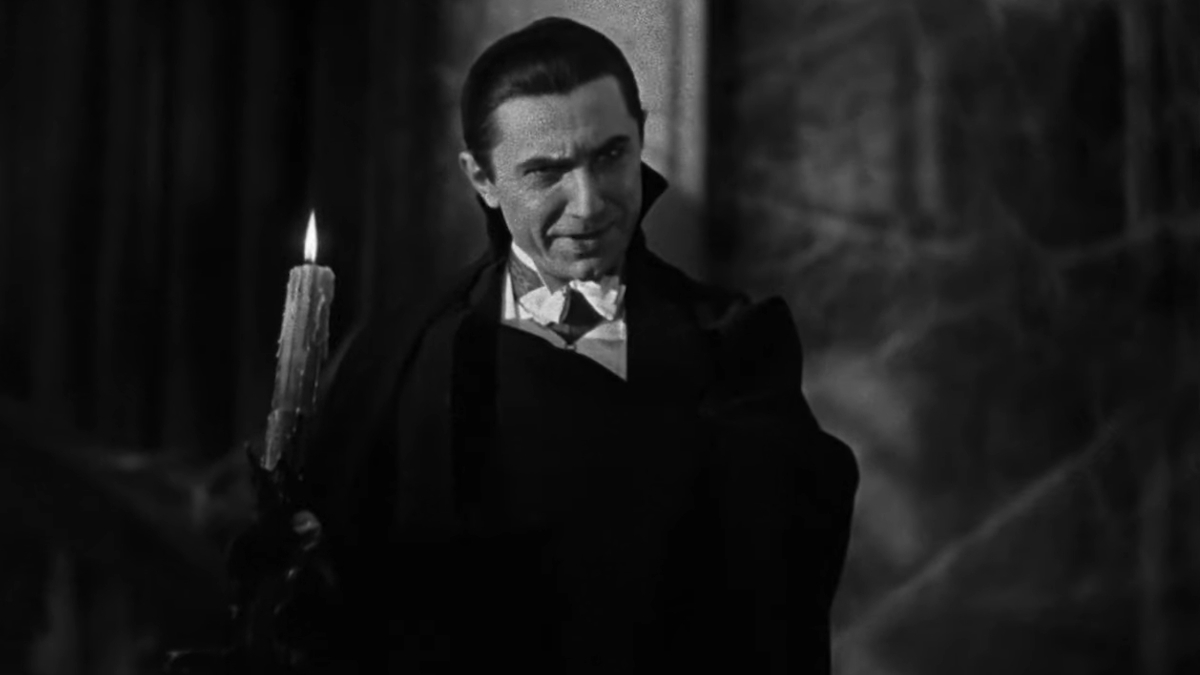
A movie monster who drips style as much as he drips the blood of his victims, Count Dracula, originating from Bram Stoker’s immortal 1897 novel, is simply one of the most iconic monsters in movie history. Played by countless actors but best remembered through Bela Lugosi (in 1931’s Dracula) and Christopher Lee (in 1958’s Horror of Dracula), the preeminent vampire in all of pop culture has fired up the imaginations of storytellers for generations, being an avatar of the aristocracy being blood-sucking predators of the underclass. Sexy and sinister, Dracula is the only monster who could steal your life as well as your breath away.
3. The Monster (Frankenstein, 1931) and the Bride (Bride of Frankenstein, 1935)
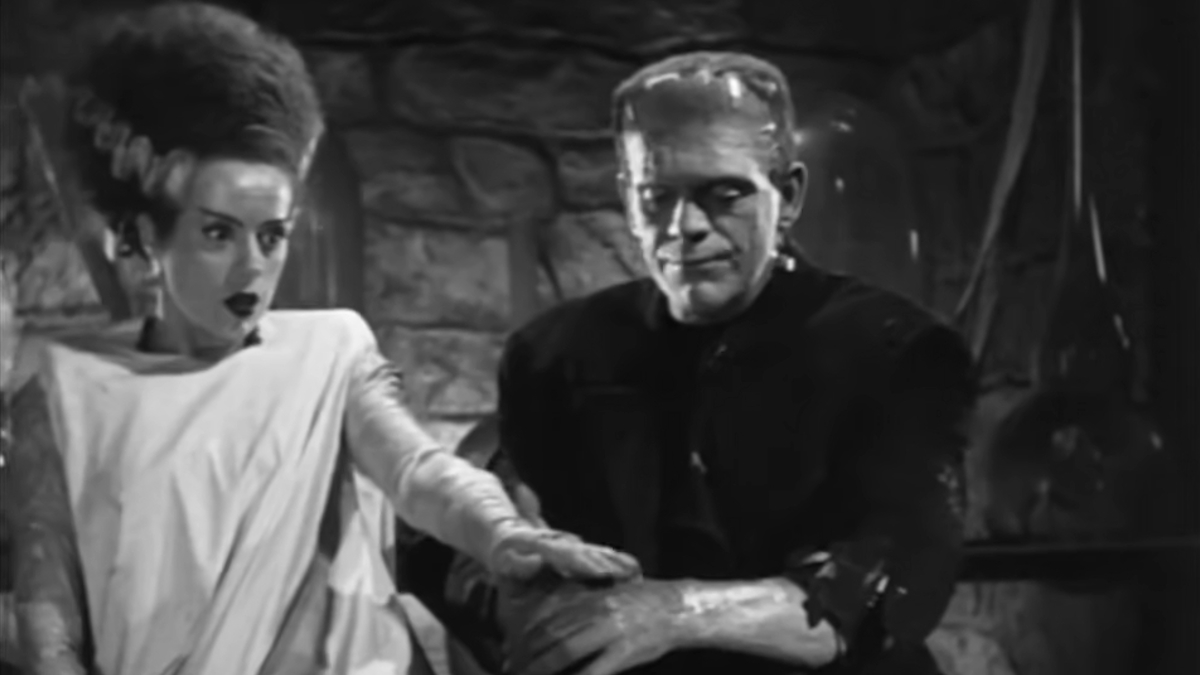
Whatever side you land on in the never-ending debate around Frankenstein’s name, there’s no denying that a powerful, half-dead humanoid made up of disparate people’s remains is one of the most enduring monsters of all time. A metaphor for the dangers of unchecked science, Frankenstein (or rather, Frankenstein’s Monster) is best remembered through the performance of Boris Karloff in the 1931 feature Frankenstein. A few years later, the sequel Bride of Frankenstein continued the story in which both Dr. Frankenstein (Colin Clive) and his creation attempt to create a suitable mate, resulting in the Bride (Elsa Lanchester). The tragedy in both movies is that Frankenstein’s Monster is woefully misunderstood, being an individual capable of gentleness but is immediately met with hatred and hostility due to his immoral origins. That the one person who could feasibly love him, the Bride, is immediately terrified of him and instantly dies with him (“We belong dead!”) makes of the most moving tragedies in monster movies.
2. Count Orlok (Nosferatu, 1922)
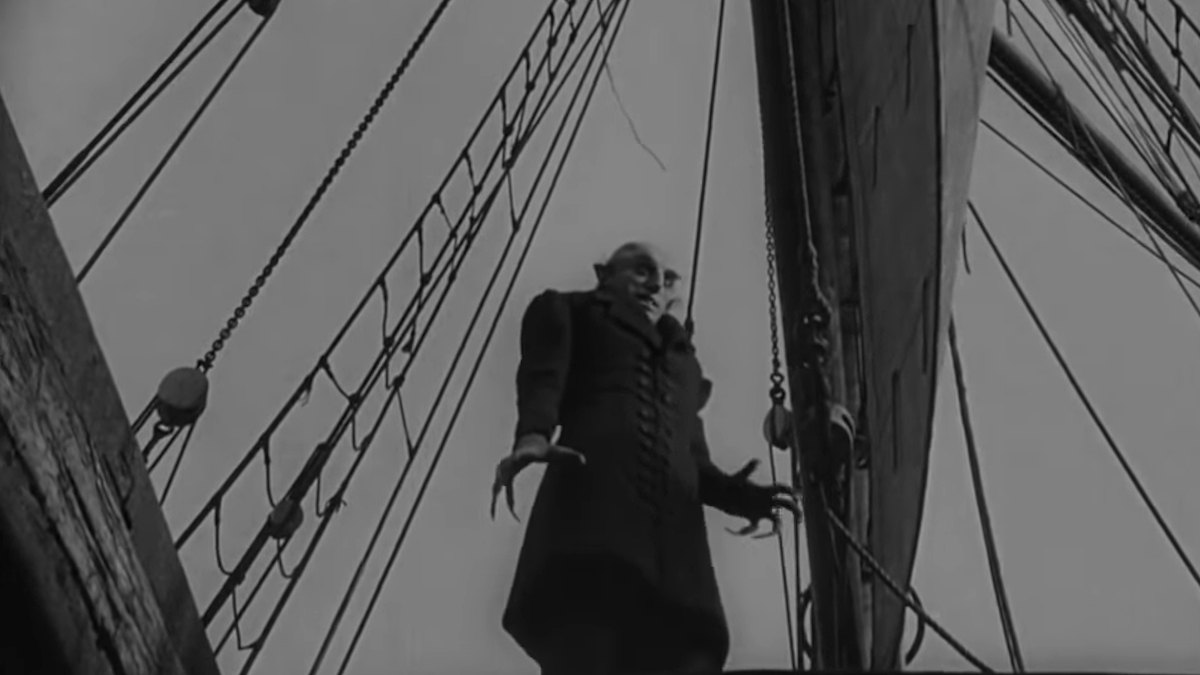
Often mistaken to be named Nosferatu, Count Orlok is an off-brand version of Count Dracula who just might be scarier than the original article. Played by Max Schreck in F. W. Muranau’s enduring German-language masterpiece, Count Orlok is a vampire whose startling animalistic features – evocative of rats, bats, and goblins – pierces our innate understanding of the natural world. While Dracula enjoys popular recognition as a handsome villain, Nosferatu stands in the shadows like a sickly distant cousin who doesn’t even need to drink your blood to scare you.
1. Godzilla (Gojira, 1954)
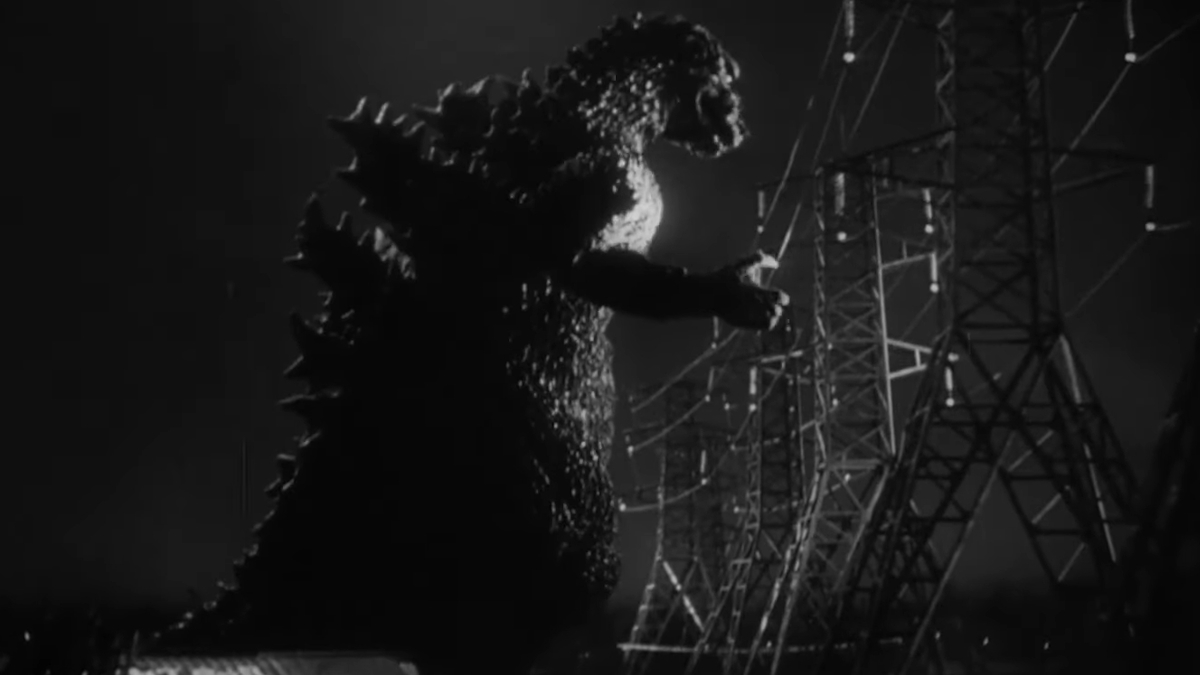
Rising from the oceans to punish mankind for its unforgivable nuclear arsenal is Godzilla, a uniquely Japanese icon whose roars and stomps shake audiences worldwide. Recognized as the “King of the Monsters,” that title did not come easily but remains well-earned. From his first appearance in Ishiro Honda’s 1954 film Gojira, Godzilla has since spawned one of the most commercially successful and thriving monster movie franchises in the world, with his canon introducing other memorable beasts like Mothra, Rodan, Gigan, as well as featuring King Kong. Despite his grim reminder of its suffering from atomic decimation, Japan has fully embraced this radioactive lizard to serve as a pop culture ambassador. Godzilla has been a villain and a hero, sometimes all at once. All hail the king of the monsters. May he always reign supreme.

Eric Francisco is a freelance entertainment journalist and graduate of Rutgers University. If a movie or TV show has superheroes, spaceships, kung fu, or John Cena, he's your guy to make sense of it. A former senior writer at Inverse, his byline has also appeared at Vulture, The Daily Beast, Observer, and The Mary Sue. You can find him screaming at Devils hockey games or dodging enemy fire in Call of Duty: Warzone.


